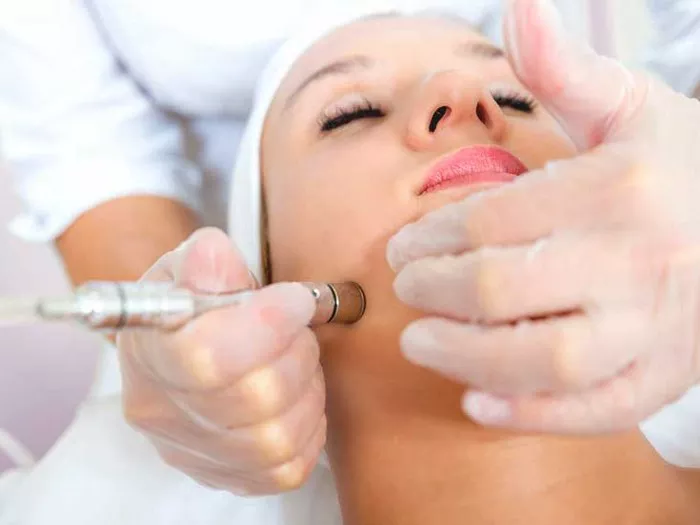Microdermabrasion is a popular skincare treatment that helps to rejuvenate and revitalize the skin, leaving it looking fresh, smooth, and youthful. While it’s commonly performed in professional settings, you can also prepare your skin at home to enhance the results of your microdermabrasion treatment. By following a few simple steps and incorporating some beneficial practices into your skincare routine, you can optimize your skin’s health and ensure a successful microdermabrasion session. In this article, we will guide you through the essential steps to take before undergoing a professional microdermabrasion treatment at home.
1. Consultation with a Dermatologist:
Before starting any skincare treatment, it is crucial to consult with a dermatologist or skincare professional. They can evaluate your skin type, identify any underlying skin conditions, and recommend the most suitable skincare products or treatments for you. A professional’s advice will help ensure that microdermabrasion is a safe and effective option for your skin.
2. Avoid Sun Exposure:
Sun exposure can make your skin more sensitive and increase the risk of complications during and after microdermabrasion. It is essential to protect your skin from the sun’s harmful UV rays for at least two weeks before your treatment. Wear a broad-spectrum sunscreen with a high SPF, cover your skin with protective clothing, and limit your time spent in direct sunlight.
3. Stop Using Exfoliating Products:
Refrain from using any harsh exfoliating products, such as scrubs or chemical exfoliants, at least one week prior to your microdermabrasion treatment. These products can make your skin more sensitive and potentially cause irritation or damage during the procedure. Instead, focus on gentle cleansing and moisturizing to prepare your skin for the treatment.
4. Hydrate Your Skin:
Keeping your skin well-hydrated is essential for the success of your microdermabrasion treatment. Drink plenty of water to maintain your skin’s moisture levels and enhance its overall health. Additionally, consider incorporating a hydrating serum or moisturizer into your skincare routine to ensure your skin is adequately moisturized and prepared for the treatment.
5. Discontinue Retinoid Use:
If you are currently using any retinoid products, such as retinol or prescription-strength retinoids, it is advisable to discontinue their use at least one week before your microdermabrasion session. Retinoids can increase skin sensitivity and make it more prone to irritation or redness during the treatment. Resume using retinoids only after your skin has fully recovered post-treatment.
6. Avoid Waxing or Hair Removal Treatments:
Avoid waxing, threading, or any other hair removal treatments in the area where you plan to have microdermabrasion. These procedures can leave your skin more sensitive and vulnerable to irritation. It’s best to wait until after your microdermabrasion treatment to resume hair removal.
7. Skip Facial Treatments:
Steer clear of facials, chemical peels, or other invasive facial treatments at least two weeks before your microdermabrasion appointment. These treatments can make your skin more sensitive and increase the risk of adverse reactions during microdermabrasion. Let your skin rest and recover before undergoing any other aggressive procedures.
8. Maintain a Consistent Skincare Routine:
In the weeks leading up to your microdermabrasion treatment, stick to a consistent skincare routine that includes cleansing, toning, and moisturizing. Choose products suitable for your skin type and avoid any potentially irritating ingredients. A well-maintained skincare routine will help improve your skin’s overall health and enhance the effectiveness of the microdermabrasion treatment.
9. Prepare a Gentle Skincare Regimen for Aftercare:
After your microdermabrasion treatment, your skin will be more sensitive and require gentle care. Prepare a post-treatment skincare regimen consisting of mild cleansers, hydrating moisturizers, and sunscreen. Avoid using any harsh or abrasive products immediately after the treatment to prevent irritation or damage.
10. Plan for Downtime:
Microdermabrasion can cause temporary redness, sensitivity, or peeling, depending on the intensity of the treatment. It’s advisable to schedule your microdermabrasion session when you have some downtime to allow your skin to recover without exposure to harsh environmental factors. Consider having the treatment done during a weekend or when you can take a few days off work or social commitments.
Conclusion:
Preparing your skin before a professional microdermabrasion treatment at home is crucial for ensuring optimal results and minimizing potential risks. By consulting with a skincare professional, protecting your skin from the sun, and following a gentle skincare routine, you can enhance the effectiveness of the treatment and promote your skin’s overall health. Remember to discuss any specific concerns or questions with your dermatologist before undergoing microdermabrasion. With proper preparation and care, you’ll be on your way to achieving a smoother, more radiant complexion.


